Contact Info
Blastomycosis Statistics and Maps
Blastomycosis is a rare fungal infection caused by Blastomyces species found in soil.
On this page:
Human Cases
Animal Cases
Annual Summary Statistics
Human Cases
From 1999-2023, 1133 laboratory-confirmed cases of human blastomycosis were reported to MDH. Please refer to Case Definition for the current and historical case definitions.
Graphs and Maps
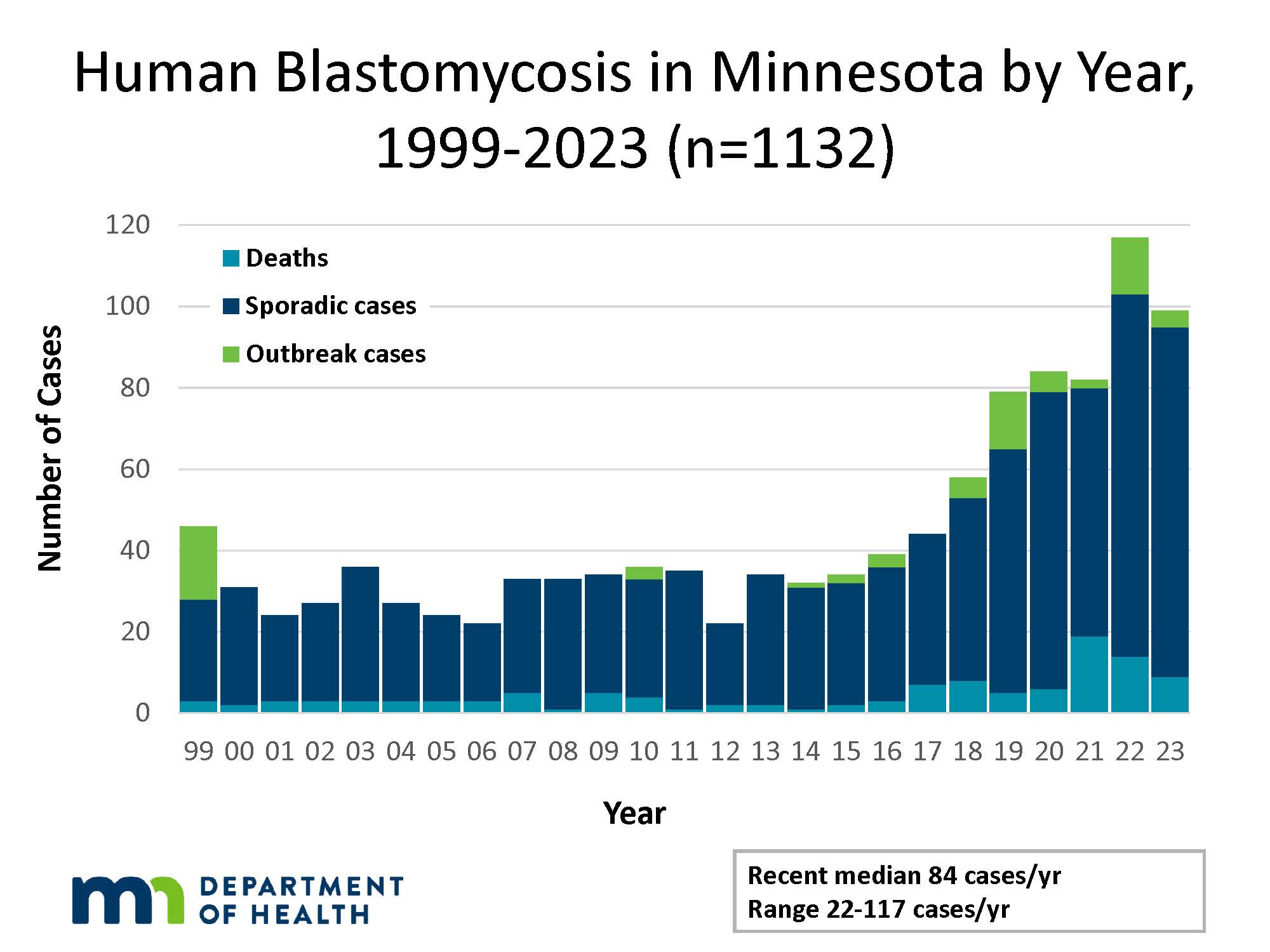 | Human Blastomycosis in Minnesota by Year, 1999-2023 (PDF) Blastomycosis cases have increased in recent years, likely due to weather and other local environmental conditions. However, increased awareness and testing may also be a factor. |
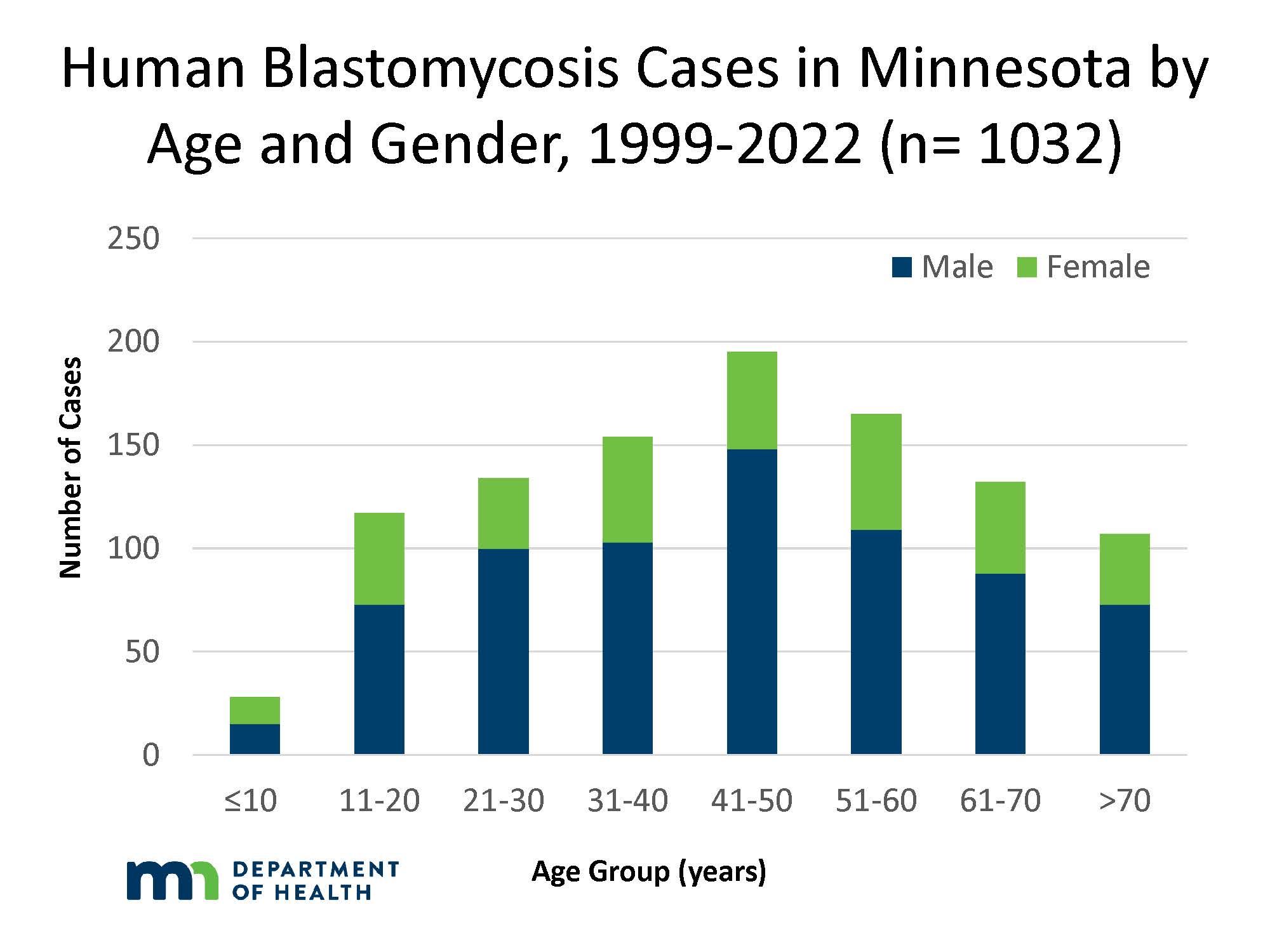 | Human Blastomycosis Cases in Minnesota by Age and Gender, 1999-2023 (PDF) Blastomycosis occurs most frequently in middle-age adults, but cases have been reported in ages from 2 – 93 years. About 70% of all cases are male. |
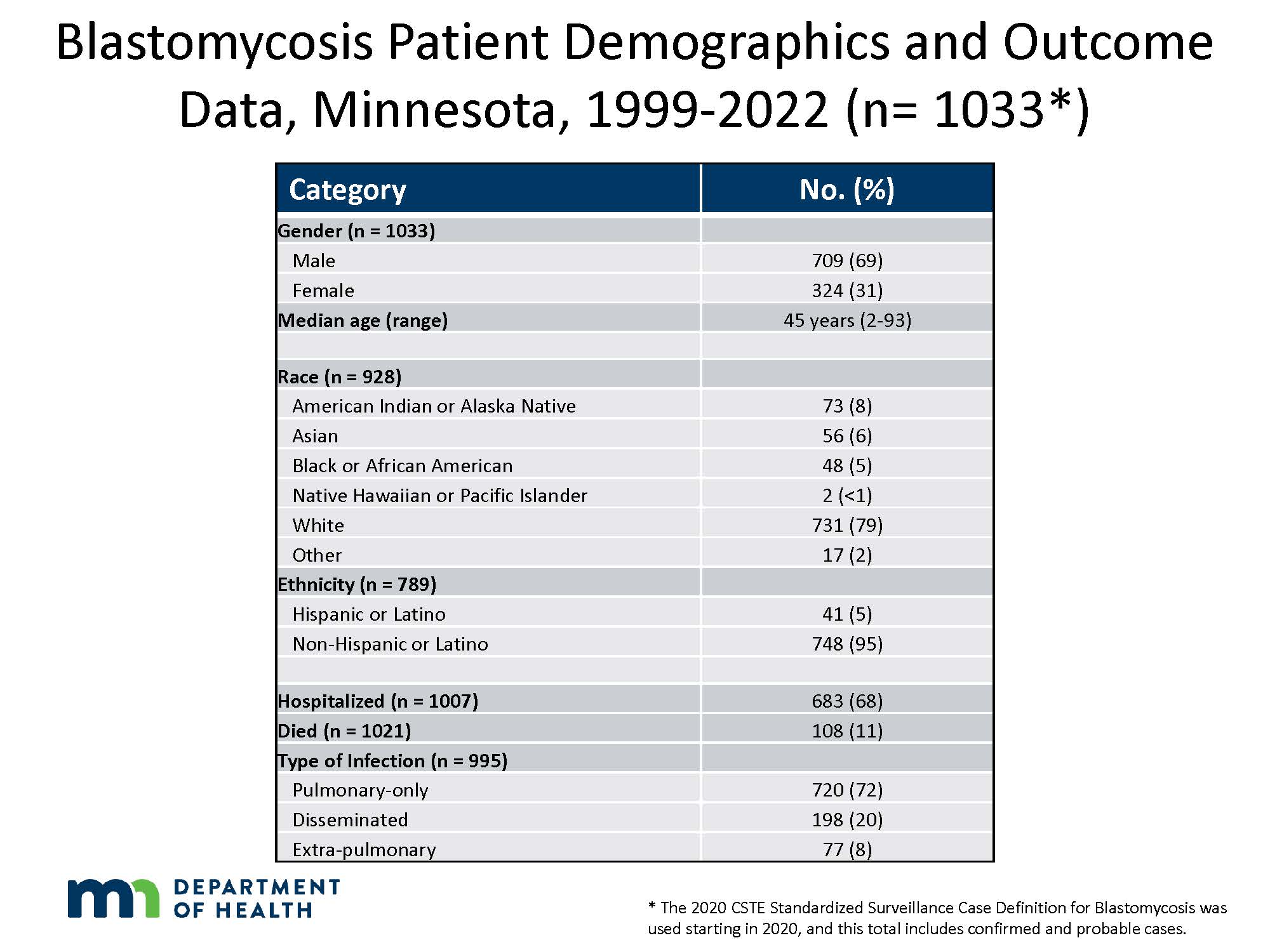 | Blastomycosis Patient Demographics and Outcome Data, Minnesota, 1999-2023 (PDF) The table has data on the age, gender, race, and ethnicity of people with blastomycosis, and what percent were hospitalized or died. |
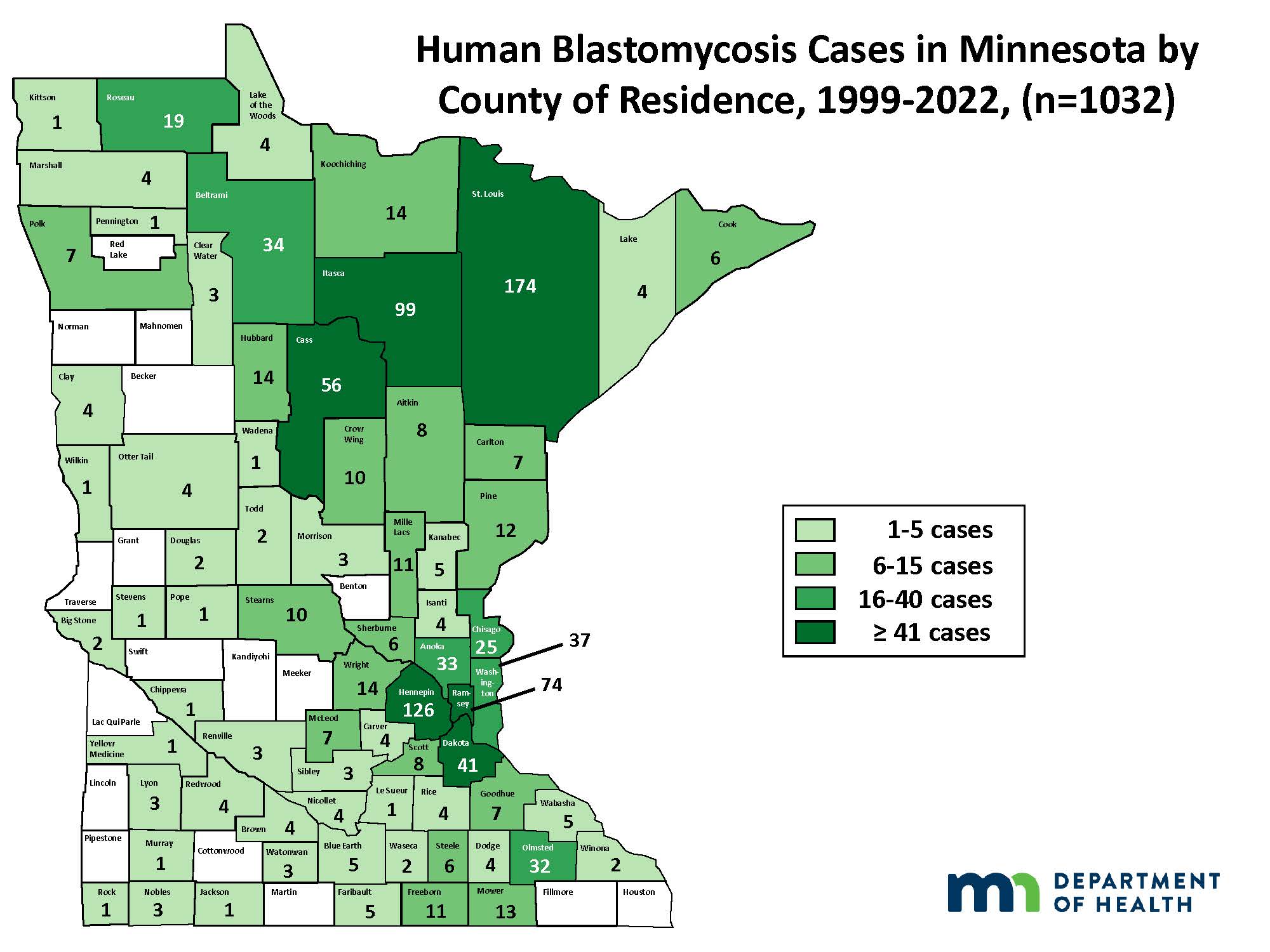 | Human Blastomycosis Cases by County of Residence, 1999-2023 (PDF) In Minnesota, about 1/3 of cases live and are diagnosed in a different county than where they were exposed to Blastomyces. Look at the difference between this map and the next. It is important for health care providers across the state to be aware of Minnesota's endemic areas. |
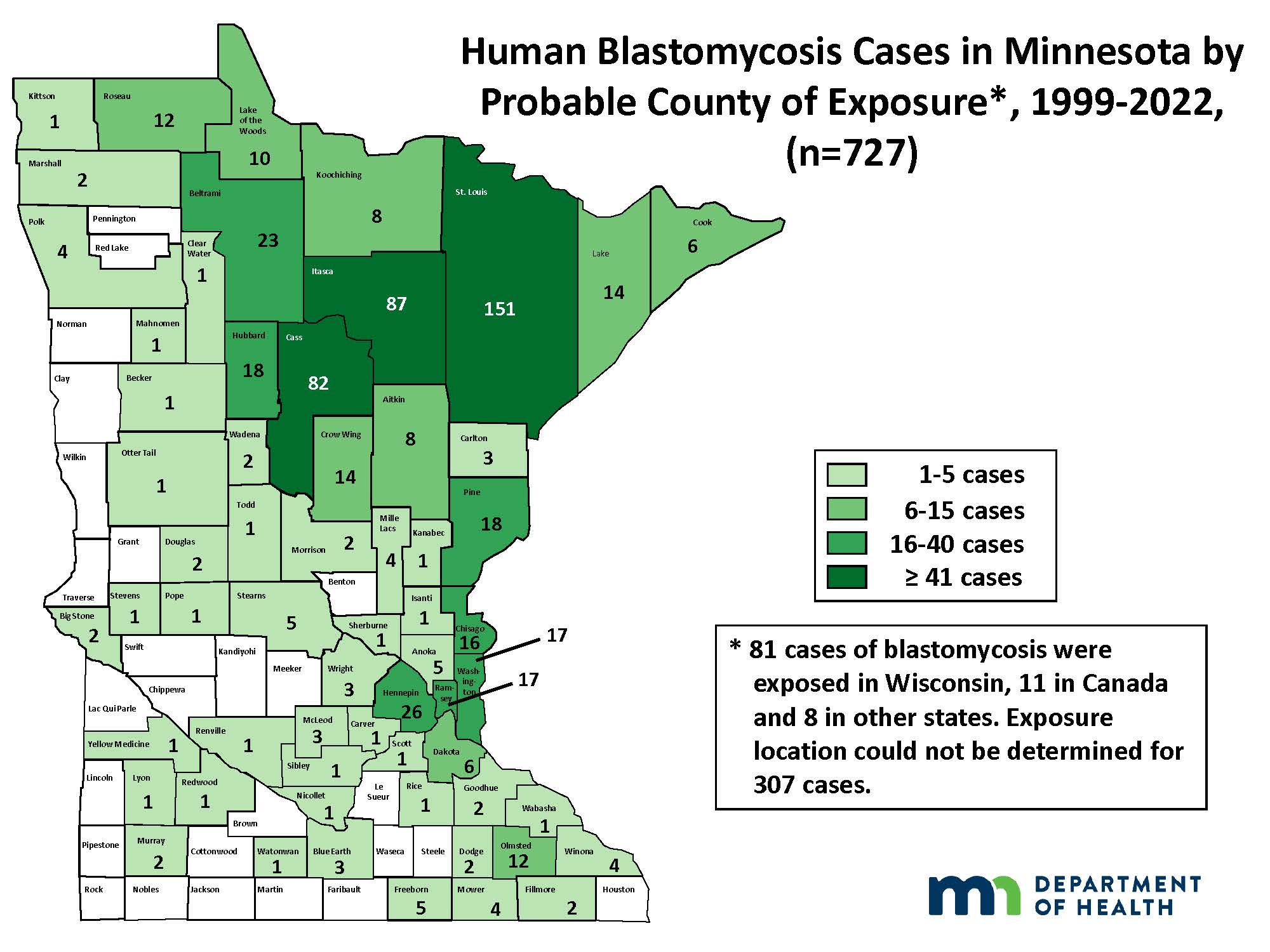 | Human Blastomycosis Cases in Minnesota by Probable County of Exposure, 1999-2023 (PDF) While most people are exposed in northern counties, or those along the Mississippi or St. Croix Rivers, this map shows that people can be exposed to Blastomyces in many counties across the state. |
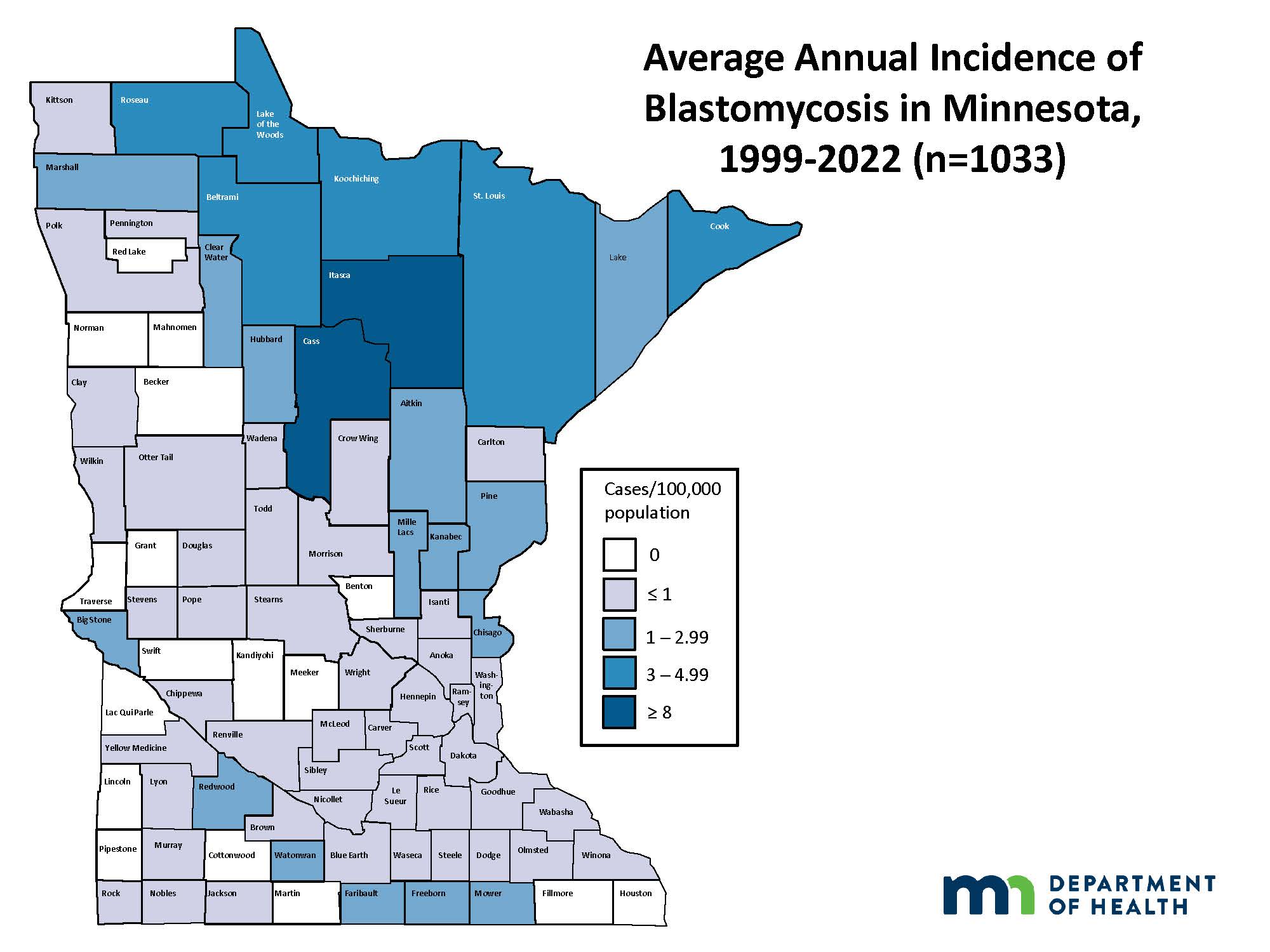 | Average Annual Incidence of Blastomycosis in Minnesota, 1999-2023 (n=1033) (PDF) Average Annual Incidence of Blastomycosis in Minnesota by County of Residence, 1999-2023 (n=1133) |
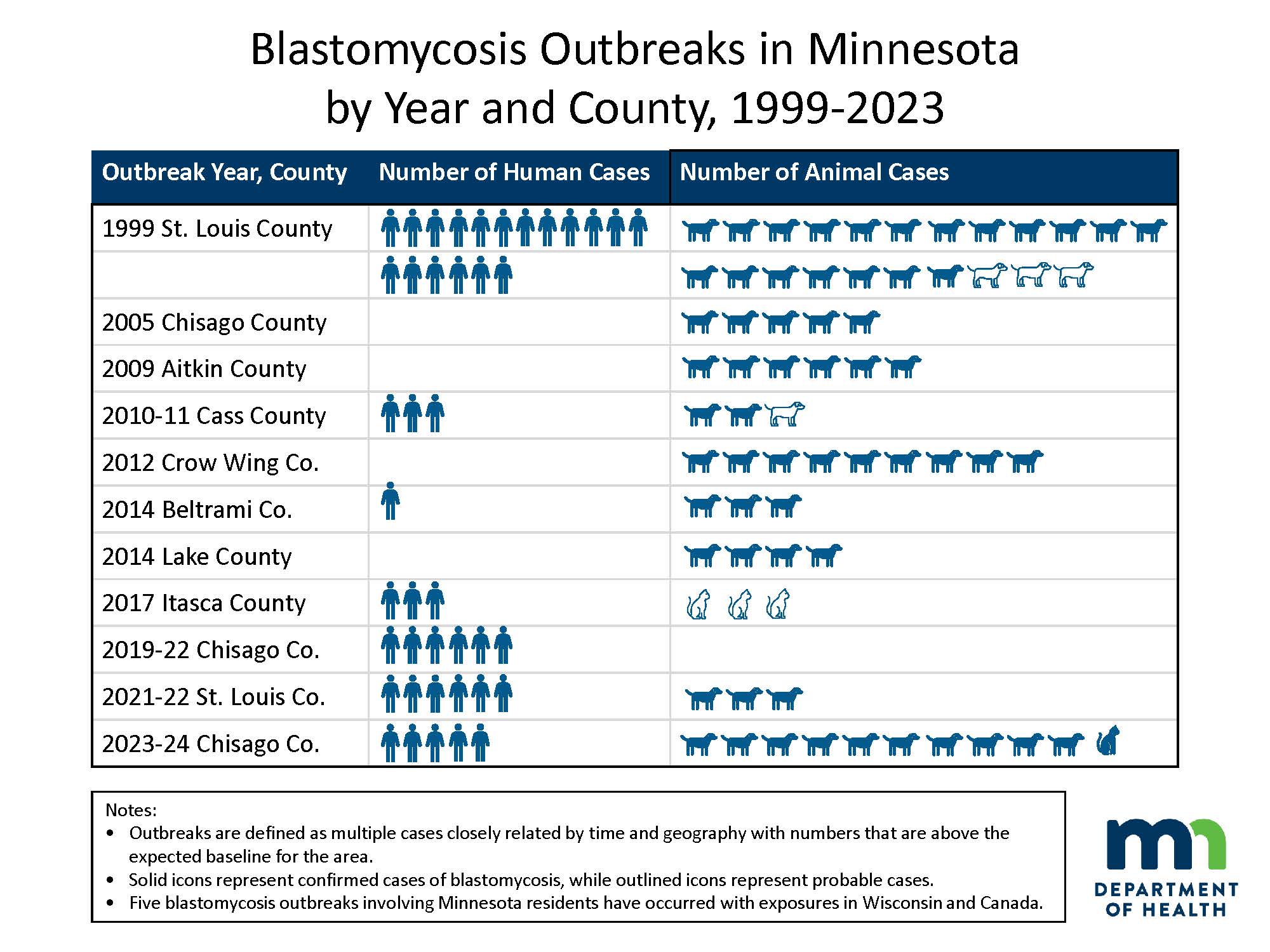 | Blastomycosis Outbreaks in Minnesota by Year and County, 1999-2023 This graph summarizes outbreaks of blastomycosis in Minnesota since 1999, and how many people and animals had outbreak-related infections. There are smaller clusters of cases across many years, particularly in counties that are highly endemic for Blastomyces. |
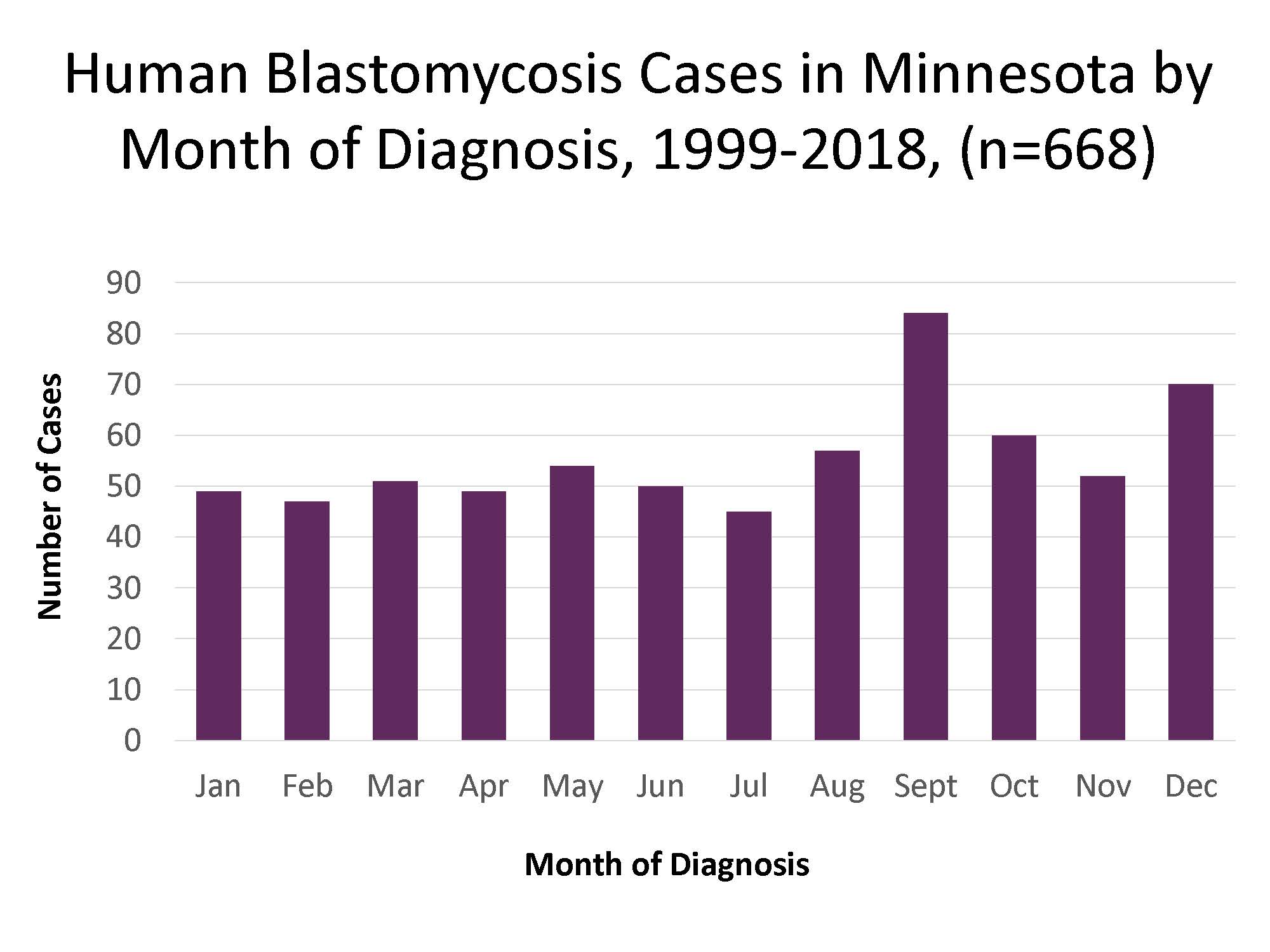 | Human Blastomycosis Cases in Minnesota by Month of Diagnosis, 1999-2023 (PDF) Blastomycosis is diagnosed slightly more often in the late summer, fall and into early winter. This is likely due to exposure to the soil-borne fungus in the summer, and an incubation period of 1-3 months |
Case Definition
From 1999-2019, a confirmed case of blastomycosis was defined as a Minnesota resident with (1) a positive Blastomyces culture; (2) Blastomyces organisms visualized in tissue or bodily fluid; or (3) a positive Blastomyces antigen test with compatible clinical illness.
Starting in 2020, the CSTE Standardized Surveillance Case Definition for Blastomycosis was adopted. In summary, a confirmed case is defined as a Minnesota resident with compatible clinical illness and (1) a positive Blastomyces culture; (2) Blastomyces organisms visualized in tissue or bodily fluid; or (3) a positive Blastomyces molecular assay. A probable case is defined as a Minnesota resident with compatible clinical illness and (1) a quantifiably positive Blastomyces antigen test or (2) positive immunodiffusion test for antibodies against Blastomyces.
Both confirmed and probable cases are counted in the data presented.
Animal Cases
From 1999-2023, 2836 laboratory-confirmed cases of animal blastomycosis were reported to MDH. A confirmed case is defined as a Minnesota resident animal with (1) a positive Blastomyces culture; (2) Blastomyces organisms visualized in tissue or bodily fluid; or (3) a positive and quantifiable Blastomyces antigen test with compatible clinical illness.
Graphs and Maps
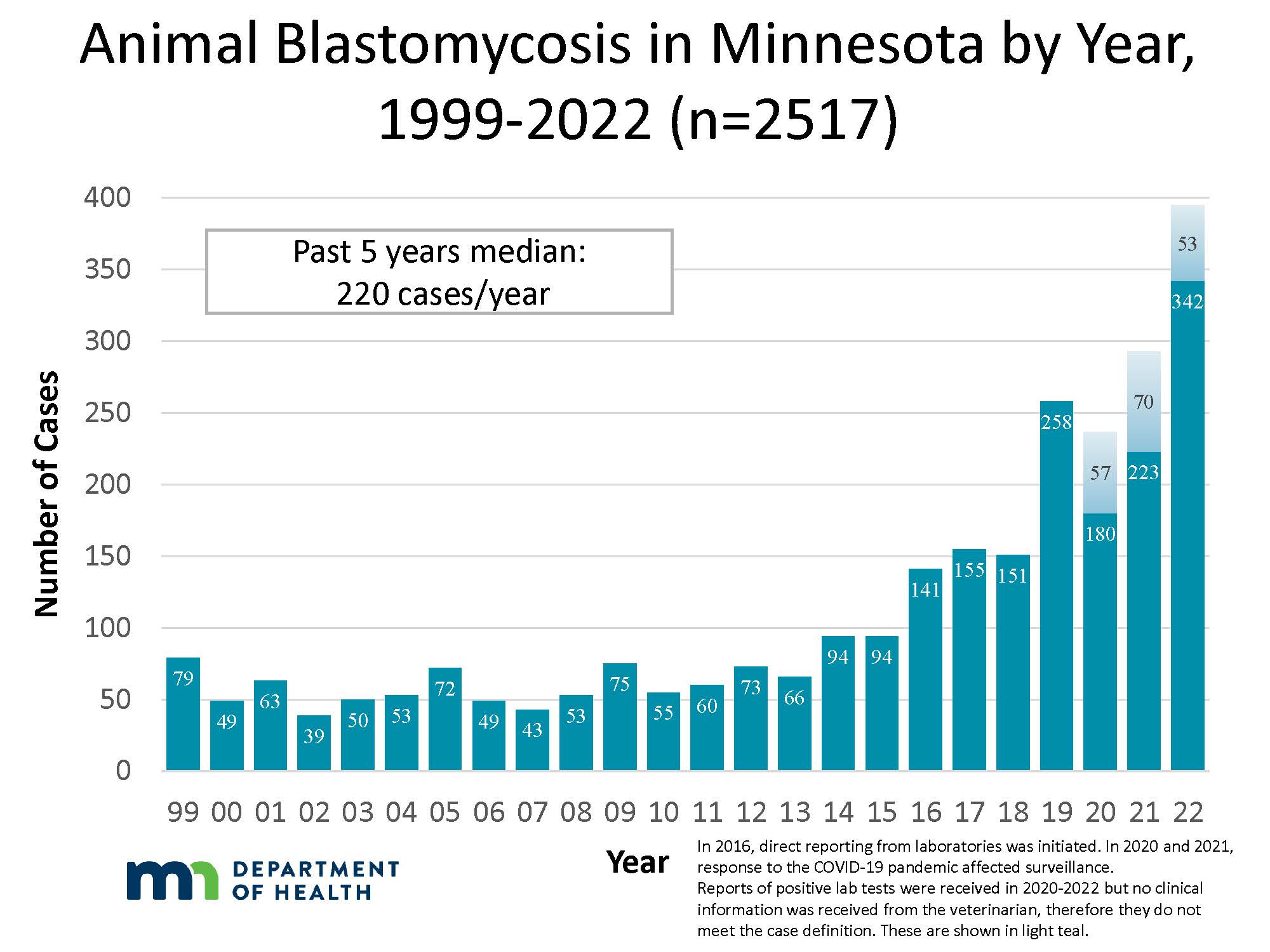 | Animal Blastomycosis in Minnesota by Year, 1999-2023 (PDF) Blastomycosis cases in animals have also been increasing. Favorable environmental conditions and improved reporting have likely played a role in these increases. |
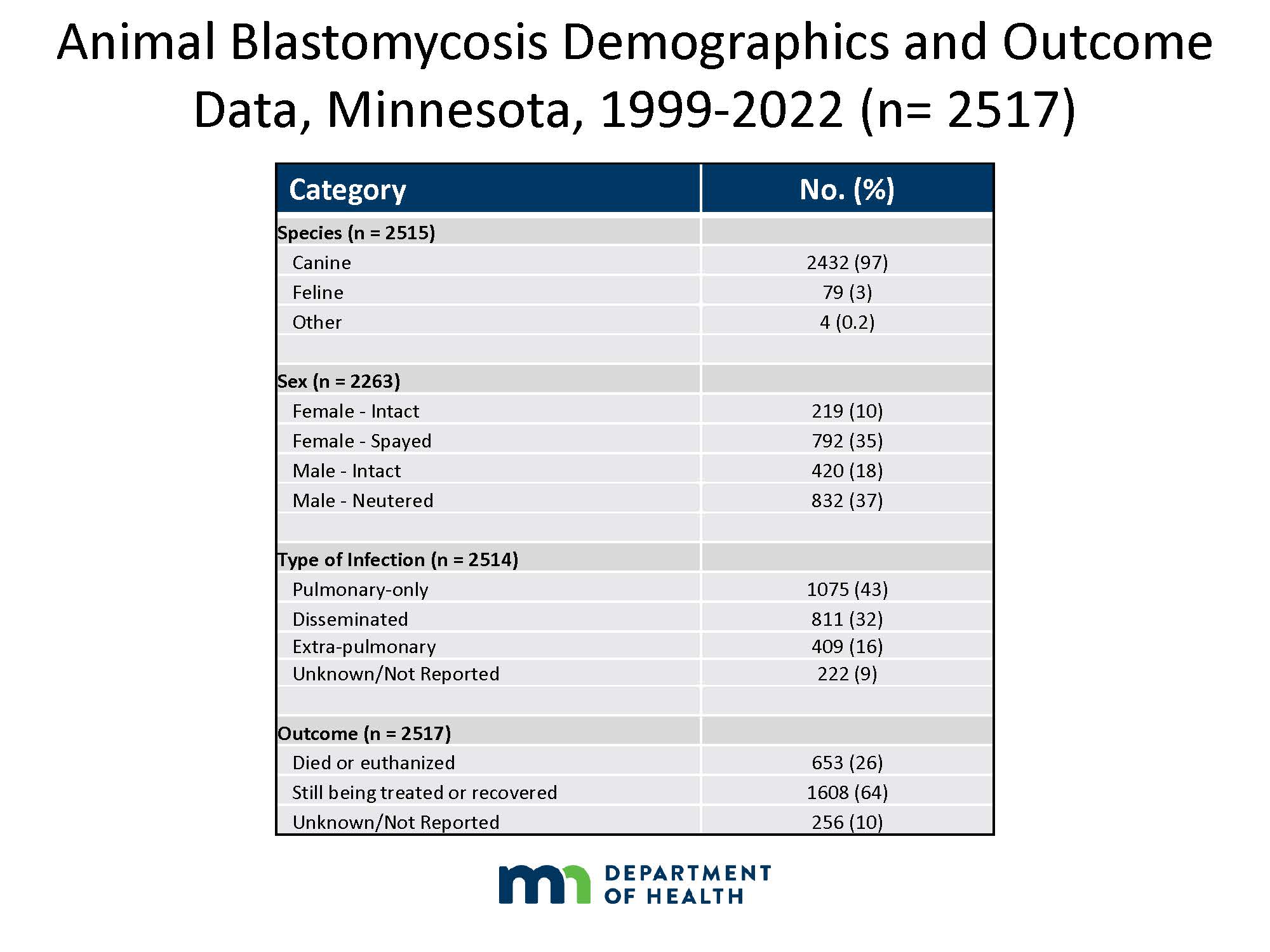 | Animal Blastomycosis Demographics and Outcome Data, Minnesota, 1999-2023 (PDF) This table has data on the sex, species, type of infection and outcome for animal blastomycosis infections. |
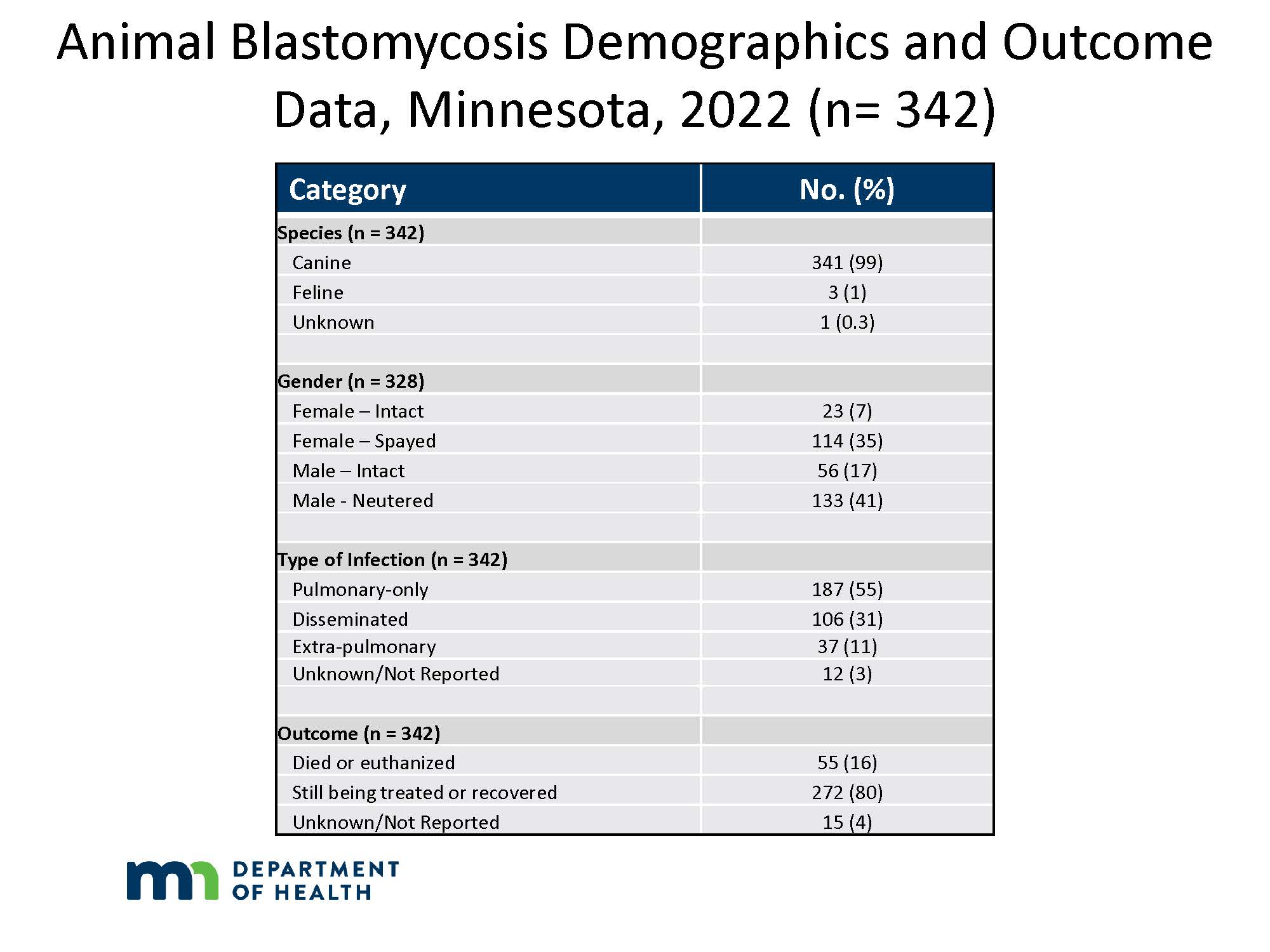 | Animal Blastomycosis Demographics and Outcome Data, 2023 (PDF) This slide shows only data for 2023 cases. |
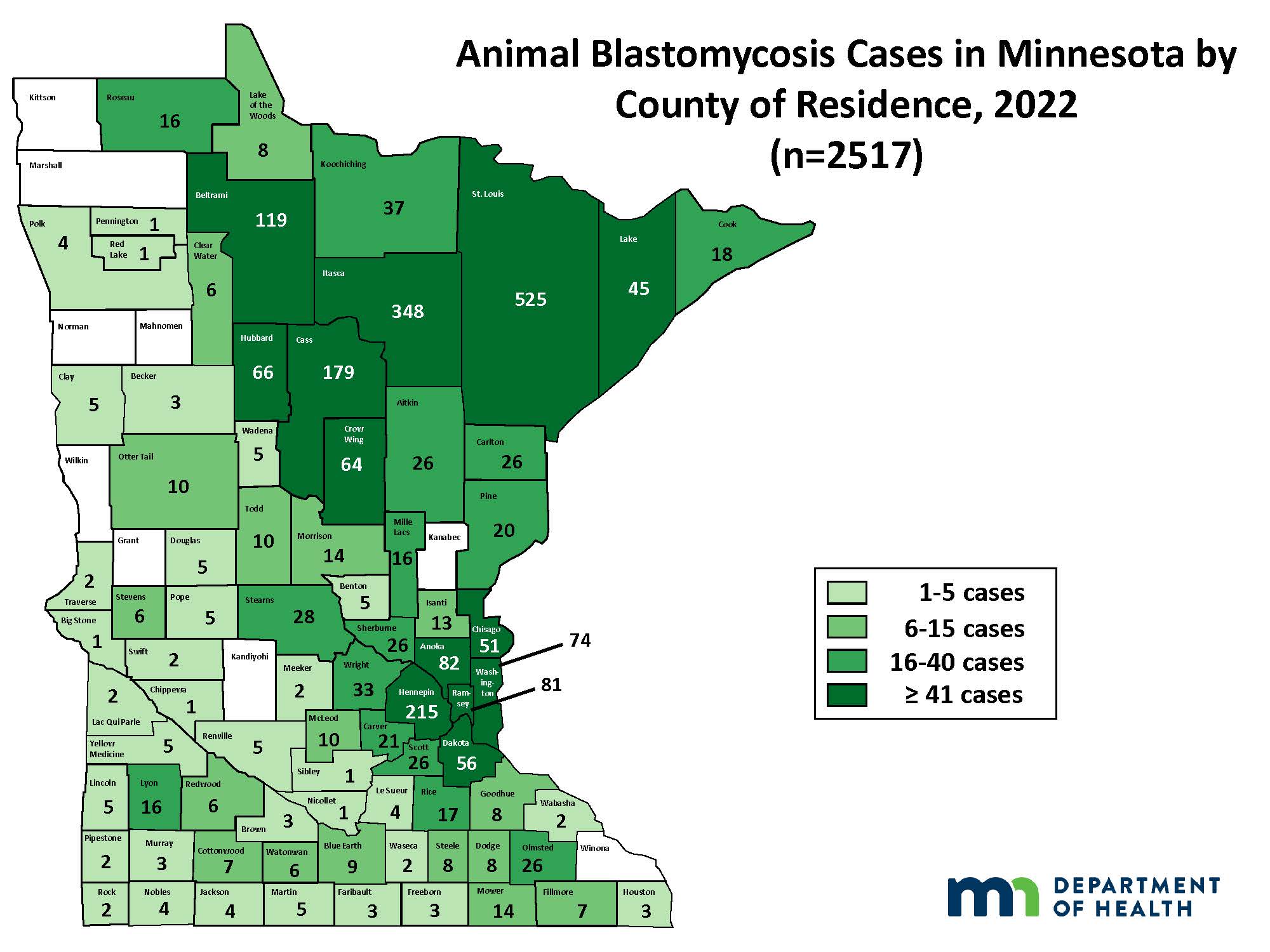 | Animal Blastomycosis Cases in Minnesota by County of Residence, 2023 (PDF) In Minnesota, many animals live and are diagnosed in a different county than where they were exposed to Blastomyces. Look at the difference between this map and the next. It is important for veterinarians across the state to be aware of Minnesota's endemic areas. |
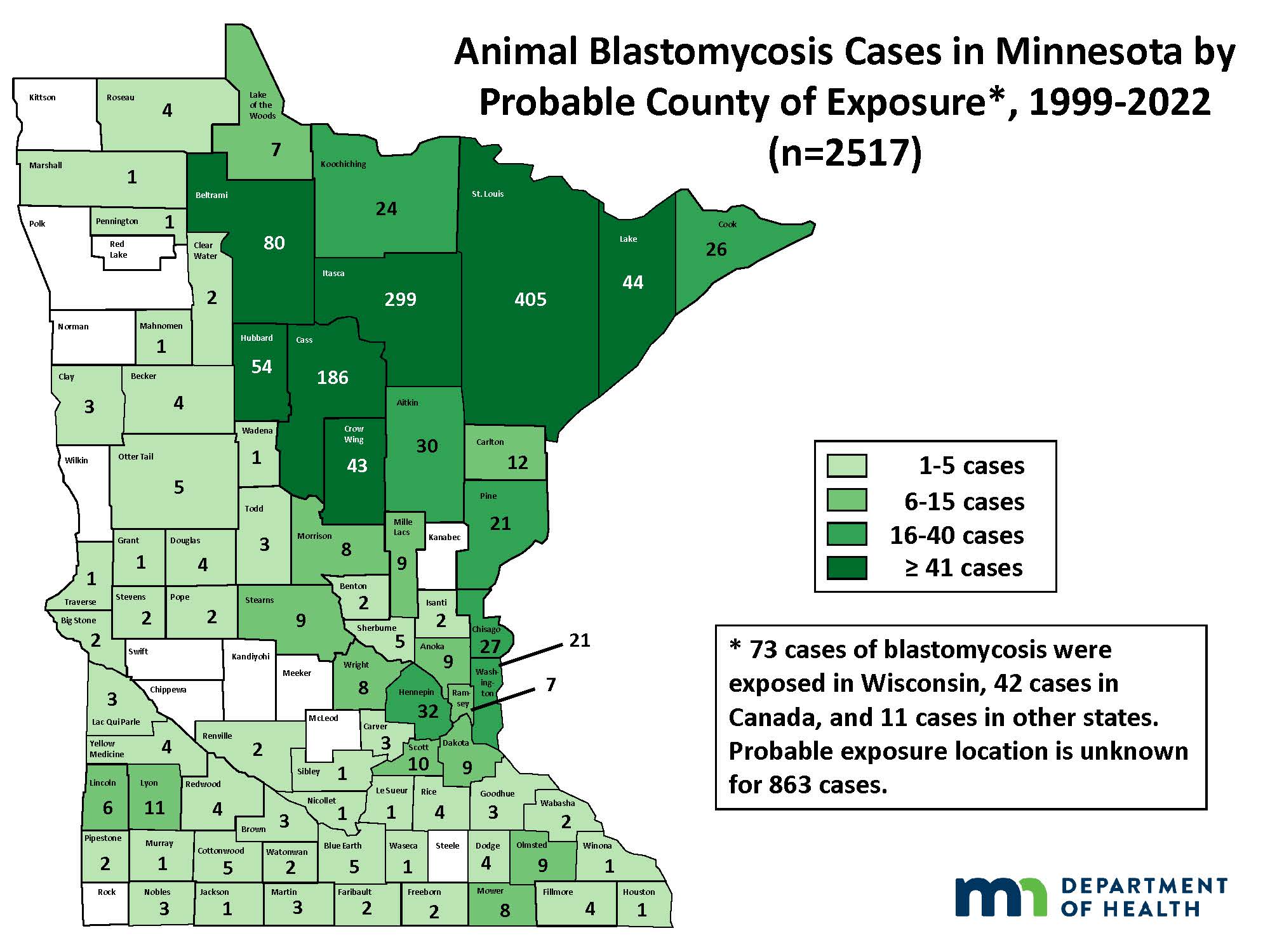 | Animal Blastomycosis Cases in Minnesota by Probable County of Exposure, 1999-2023 (PDF) While many animals are exposed in northern counties, or those along the Mississippi or St. Croix Rivers, this map shows that animals can be exposed to Blastomyces in many counties across the state. Tracking these cases in animals helps us know where humans are also at risk of blastomycosis. For example, cases in dogs appeared earlier than humans in the St. Croix River valley, which helped define that area as endemic. |
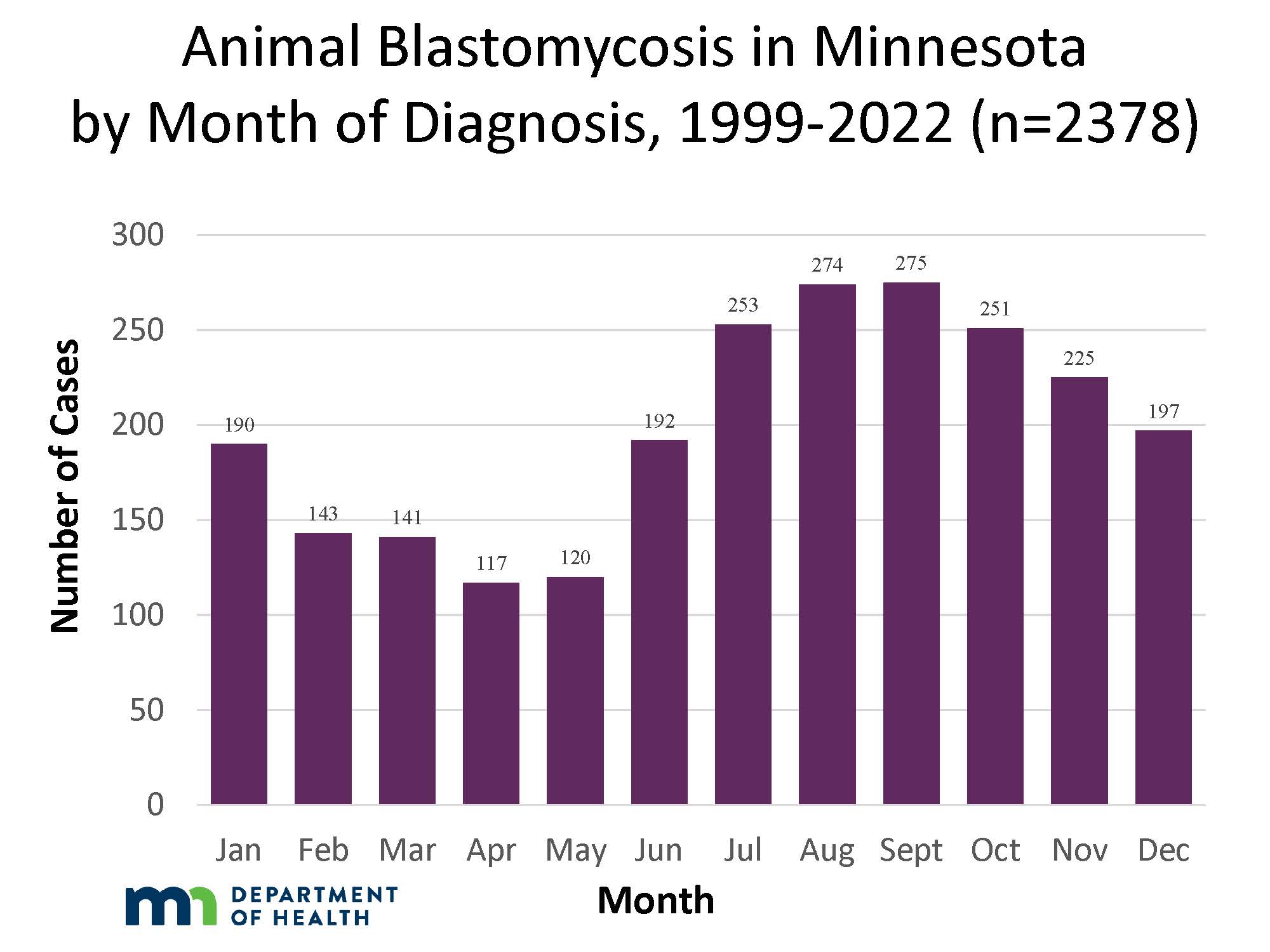 | Animal Blastomycosis in Minnesota by Month of Diagnosis, 1999-2023 (PDF) As with human cases, blastomycosis is diagnosed more often in the fall and early winter. This is likely due to exposure to the soil-borne fungus in the summer, and an incubation period of 1-3 months. |
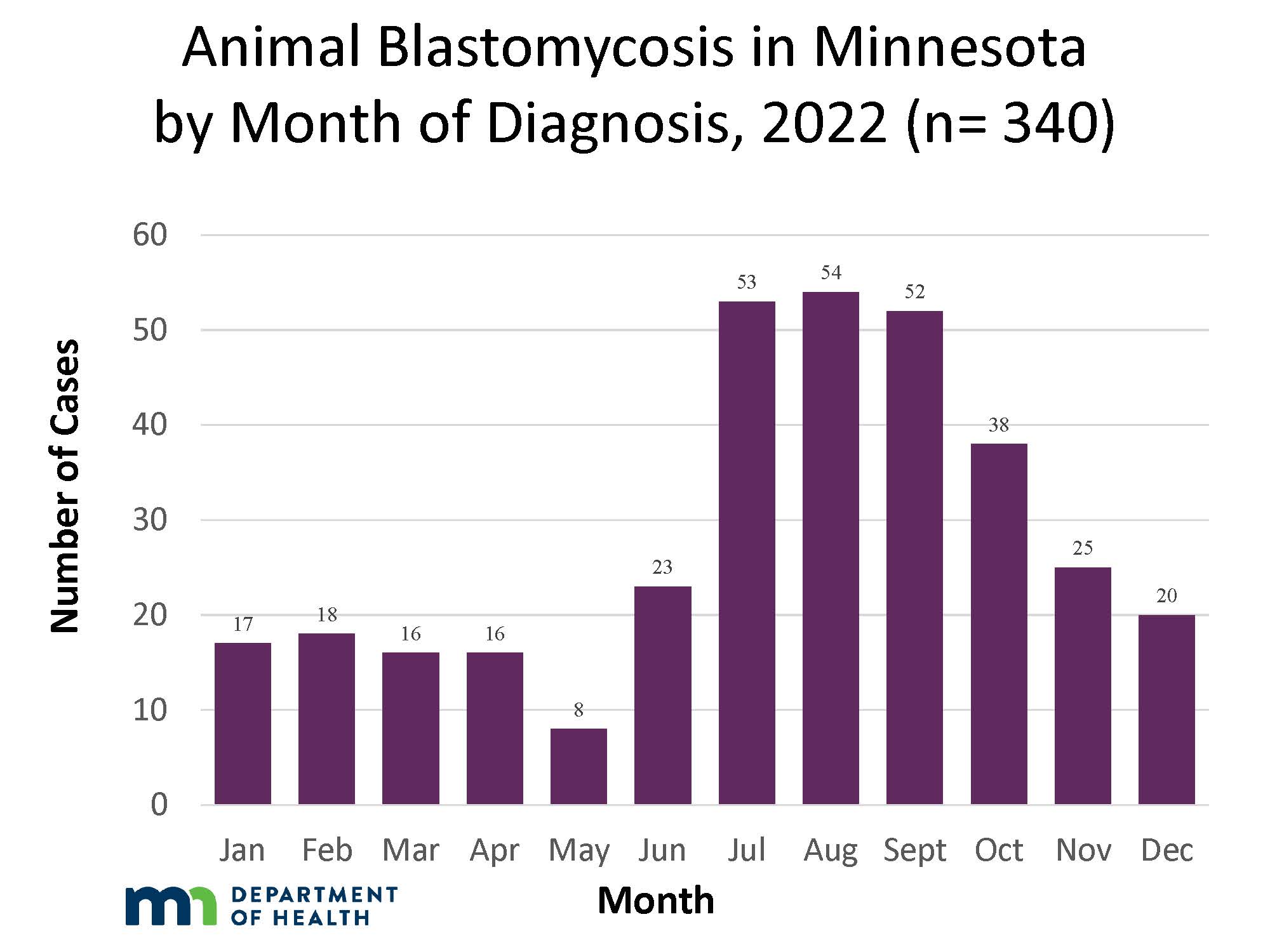 | Animal Blastomycosis in Minnesota by Month of Diagnosis, 2022 (PDF) This slide shows only data for 2022 cases. |
Annual Summary Statistics
- Blastomycosis: Annual Summary of Reportable Diseases
The Minnesota Department of Health collects information on infectious diseases for the purposes of determining disease impact, assessing trends in disease occurrence, characterizing affected populations, prioritizing control efforts, and evaluating prevention strategies, and reports statistics annually. Note: There are no listings for years in which there were no cases reported. The annual summary archives available on the web go back to 1997.